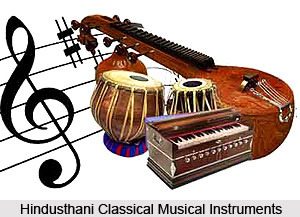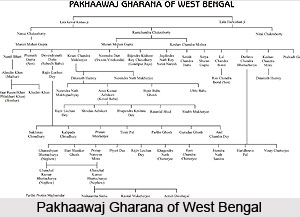 Hindustani Classical Music or North Indian Classical Music has always undergone
steady growth but at times it has also suffered a setback and stagnation over the last few
hundred years. Majority of the Muslim rulers were disinclined towards music as it was
stated in their religion. However a few of these emperors became great lovers of Indian
music and art. Hence they encouraged the development of music and welcomed many
great musicians in their courts from their native lands. Among these famous singers was
Amir Khusrao. He is considered as the most notable musician and is credited with
assimilating the Iranian mquam with Indian Raaga and then creating new raaga from this
union.
Hindustani Classical Music or North Indian Classical Music has always undergone
steady growth but at times it has also suffered a setback and stagnation over the last few
hundred years. Majority of the Muslim rulers were disinclined towards music as it was
stated in their religion. However a few of these emperors became great lovers of Indian
music and art. Hence they encouraged the development of music and welcomed many
great musicians in their courts from their native lands. Among these famous singers was
Amir Khusrao. He is considered as the most notable musician and is credited with
assimilating the Iranian mquam with Indian Raaga and then creating new raaga from this
union.
The import of talented musicians from outside India has had a positive influence on raaga
music in the Hinduism music tradition. Emphasis was placed on the aesthetic element of
the Raaga structure. Rendering of Raaga became much more submersed with human
emotions that were initially designed. The original raaga music still retained the ancient
essence and its good old qualities. This made Hindustani music more active, making it an
important art in the royal courts. Unfortunately being in a superior position in the courts
and enjoying the fruits of the highest patronage from the kings, musicians became
confident, idle and somewhat vain. Music faced a setback. From a strange combination of
strength of the dynamism and weakness of the setback evolved what came to be known
as the Gharana System.
Gharana in the musical terms came to represent a particular tradition or a particular way
of presenting Hindustani music. It is interesting to trace the history of the concept of
Gharana. Gharaha gained importance after the 16th century. King Akbars court proved
to the most supportive to the propagation and flourishing of the Hindustani music, but his
successors did not prove to be so. Therefore gifted musicians left their courts one by one
and went all over North India looking for patronage from other courts and states.
 Once
taken the rulers were averse to the musicians to go anywhere else. They were isolated
from their people completely and forced to live in some kind of musical confinement.
Naturally there remained no scope for these musicians to widen their musical knowledge
or musical vision. Continued isolation produced rigid adherence to one?s style creating
almost an obsession. From these arose strict musical lineages that were zealously guarded
and preserved. Master of that lineage assumed the leadership of the followers of that
musical lineage. Since the ?father? and the entire lineage was confined to one geographic
area, their musical lineage, called ?Gharana? came to be known after the name of that
place and their musical style itself as the style of that Gharana. The names of different
Gaharana assumed the names of the villages and towns in North India.
Once
taken the rulers were averse to the musicians to go anywhere else. They were isolated
from their people completely and forced to live in some kind of musical confinement.
Naturally there remained no scope for these musicians to widen their musical knowledge
or musical vision. Continued isolation produced rigid adherence to one?s style creating
almost an obsession. From these arose strict musical lineages that were zealously guarded
and preserved. Master of that lineage assumed the leadership of the followers of that
musical lineage. Since the ?father? and the entire lineage was confined to one geographic
area, their musical lineage, called ?Gharana? came to be known after the name of that
place and their musical style itself as the style of that Gharana. The names of different
Gaharana assumed the names of the villages and towns in North India.
As mentioned earlier the master of each Gharana created and trained all his disciples in
his own individual style of music and presentations. It was faithfully carried on by loyal
students and the following generations, thus establishing and propagating the specific
musical style of the given Gharana, commonly called ?gayaki.? Musicians of the same
Gharana shared a common musical heritage, a common repertoire and a common style of
Raga presentation. Since Raga music was the only form of music in the Hindustani music
tradition, Raga presentations itself flourished rapidly. While creating their own individual
styles various Gharana masters stressed upon various aspects of Raga presentations, some
emphasizing musical notes, some emphasizing the rhythmic aspect and some only the
emotional expression, eventually the specific style becoming synonymous with the
Gharana Gayaki. Musicians of each Gharana claimed themselves to be the best and their
Gharana Gayaki to be superior to the rest. Therefore each Gharana Gayaki progressed
well.
The core of each Gharana was usually a group of trained musicians related in some way
through only the male members of the family. Occasionally members from the female
line were included as well. Very few outsiders meaning students not related through
blood had any chance of becoming a successor of the given Gharana. There were much
folklore about this Gharana concept that have floated around. One such amazing folktale
is that few disciples who after years of training from the head of one specific Gharana
decided to change the Gharana.




















